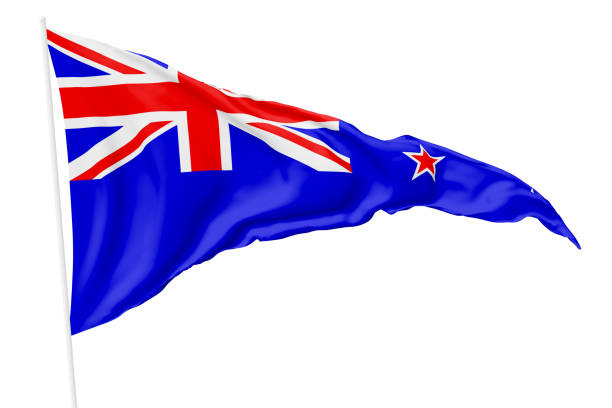From Fjords to Futures: A Comprehensive Guide to Scholarships for Filipino Students in Norway
Introduction
Advertisements
The majestic fjords, vibrant cities, and world-class educational institutions of Norway beckon Filipino students seeking academic excellence in a stimulating and culturally rich environment. However, the high cost of living in Norway can be a barrier for many Filipino aspirants. Fortunately, numerous scholarships are available to bridge this financial gap and empower Filipino students to pursue their educational dreams in the Land of the Midnight Sun. This comprehensive guide equips you with the knowledge and strategies to navigate the scholarship landscape in Norway, maximize your chances of success, and embark on a transformative academic journey.
This guide delves into the various scholarship opportunities available, from prestigious government programs to university-specific scholarships and private foundation awards. It provides practical tips on crafting compelling applications, navigating cultural differences, and integrating into Norwegian student life. Whether you’re a high-achieving undergraduate seeking a Bachelor’s degree or a seasoned professional aiming for a Master’s program, this guide will empower you to chart your path towards academic success in Norway.
Understanding the Educational Landscape in Norway
Norway boasts a world-class education system known for its innovative teaching methods, emphasis on research, and commitment to student well-being. Higher education in Norway consists of universities and university colleges, both offering Bachelor’s and Master’s degrees. The academic year typically runs from August to June, with semesters divided by short breaks.
International students, including Filipinos, are welcomed in Norwegian institutions. Many programs are taught in English, especially at the Master’s level. However, some universities offer programs in Norwegian, requiring proficiency in the language. Familiarizing yourself with the educational system and language requirements is crucial before embarking on your scholarship search.
Exploring Scholarship Opportunities in Norway
Securing a scholarship in Norway requires a targeted approach. Here’s a breakdown of the various scholarship avenues available to Filipino students:
Advertisements
Government Scholarships:
-
Norwegian Quota Scheme: This prestigious program offered by the Norwegian Ministry of Education and Research targets students from developing countries, including the Philippines. It focuses on fields of study considered beneficial for mutual development, such as renewable energy, sustainable fisheries management, maritime technology, or education, with applications suited to developing country contexts.
- State Educational Loan Fund (Statens lånekasse for utdanning): This government agency offers loans and grants specifically for international Master’s students studying in Norway. A portion of the loan can be converted into a grant upon successful completion of studies and meeting specific criteria, such as returning to the Philippines for a designated period after graduation.
University Scholarships:
Many Norwegian universities offer scholarships specifically for international students, including Filipinos. These scholarships can be merit-based, need-based, or a combination of both. They might be offered by individual faculties or departments within the university, often focusing on specific fields of study aligned with the university’s research strengths. Here’s how to explore university scholarships:
- University Websites: Visit the websites of universities in Norway you’re interested in. Look for sections dedicated to “international students” or “scholarships” on their financial aid pages.
- Field-Specific Scholarships: Universities might offer scholarships targeted towards specific Master’s programs or research areas. Explore the websites of relevant departments or research centers within the universities to discover potential. scholarship opportunities aligned with your field of study.
- Contact Admissions Offices: Don’t hesitate to contact the admissions office of universities you’re interested in. They can provide guidance on scholarship opportunities relevant to your academic background and program choices.
Private Scholarships and Foundations:
Several private foundations and organizations in Norway offer scholarships for international students, including Filipinos. These scholarships can be merit-based, need-based, or targeted towards specific fields of study. Here’s how to find them:
- Scholarship databases: Utilize online scholarship databases dedicated to international students, such as Scholarship Positions or educations.com. These platforms allow you to filter scholarships based on.your nationality, intended field of study, and location (Norway).
- Corporate Social Responsibility Programs: Some Norwegian companies with operations or partnerships in the Philippines might offer scholarships for Filipino students to pursue studies relevant to their industries. Research these companies and explore their social responsibility initiatives or scholarship programs.
- Philippine Government Agencies:The Philippine government, through agencies like CHED (Commission on Higher Education) or the Department of Foreign Affairs (DFA), might have partnerships with Norwegian institutions offering scholarship opportunities. Explore their websites or.scholarship programs for relevant information.
Building a Strong Application for Scholarships in Norway
Obtaining a scholarship in Norway requires a well-crafted application that showcases your academic merit, potential for success, and alignment with the scholarship’s objectives. Here’s a roadmap to guide you through the process, with specific considerations for Filipino students:
-
Research and Identify Scholarships: Begin your journey by thoroughly researching scholarships available to Filipino students in Norway. Explore resources like:
- The websites of the Norwegian Ministry of Education and Research
- The websites of individual universities in Norway you’re interested in (many universities have scholarship sections on their websites)
- Scholarship databases dedicated to international students, such as the Commission on Higher Education (CHED) in the Philippines or international scholarship search engines.
- Philippine government agencies or organizations with partnerships with Norway, such as the Department of Foreign Affairs (DFA) or the Philippine Embassy in Oslo. These entities might offer scholarship opportunities or have insights into relevant programs.
-
Eligibility Criteria: Carefully review the eligibility criteria for each scholarship you identify. Ensure you meet all the requirements, such as:
- Academic qualifications (minimum GPA requirements)
- Nationality restrictions (some scholarships might be exclusive to Filipino students)
- Language proficiency (English proficiency is often required, and Norwegian language skills might be beneficial for some scholarships)
- Intended field of study (some scholarships might prioritize specific fields relevant to development priorities in the Philippines)
- Work experience (some scholarships may require or prefer relevant work experience)
-
Application Deadlines: Set clear timelines and adhere to application deadlines strictly. Missing deadlines is an automatic disqualification for most scholarships. Mark important deadlines on your calendar and set reminders to ensure timely submission.
-
Required Documents: Applications typically require various documents, including:
- Academic transcripts (official English translations might be required)
- Standardized test scores (if applicable, such as the GRE or GMAT for Master’s programs)
- Letters of recommendation (from professors familiar with your academic abilities)
- A CV or resume
- A motivational letter (also known as a statement of purpose)
-
Academic Transcripts: Request official transcripts from your university in the Philippines. Ensure transcripts include your grades, coursework completed, and any relevant distinctions you’ve earned.
-
Standardized Test Scores (if applicable): Some scholarships or Master’s programs might require standardized test scores like the Graduate Record Examinations (GRE) or the GMAT (Graduate Management Admission Test). Register for these tests well in advance and achieve scores that meet the program or scholarship’s requirements.
-
Letters of Recommendation: Request strong letters of recommendation from professors who can speak to your academic abilities, research skills, and potential for success in your chosen field of study. Ideally, these professors should have taught you core courses or supervised your research projects. Provide clear instructions to your recommenders, including your CV or a copy of your application essay (if possible), and any relevant information about the scholarship or program.
-
Curriculum Vitae (CV) or Resume: Prepare a well-structured CV or resume that highlights your academic achievements, relevant work experience (if any), research skills, volunteer experiences, and awards or recognitions. Tailor your CV to each scholarship or program application, emphasizing skills and experiences relevant to their specific requirements.
-
Motivational Letter (Statement of Purpose): This is your chance to tell your story and convince the scholarship committee of your qualifications and aspirations. Here are some key aspects to consider, emphasizing your background as a Filipino student:
-
Academic Background: Outline your academic journey, highlighting relevant coursework, achievements, and any distinctions you’ve earned. Demonstrate how your academic background prepares you for the chosen field of study in Norway. Mention any challenges you’ve faced in your educational journey and how you’ve overcome them.
-
Unique Perspective: As a Filipino student, you bring a unique perspective to the classroom. Highlight the specific knowledge, experiences, or cultural understanding you possess that can enrich the learning environment in Norway. Perhaps you’ve witnessed firsthand the challenges faced by communities in the Philippines or have insights into how to address issues relevant to your field of study within the Philippine context. Highlight the specific knowledge, experiences, or cultural understanding you possess that can enrich the learning environment in Norway. Perhaps you’ve witnessed firsthand the challenges faced by communities in the Philippines or have insights into how to address issues relevant to your field of study within the Philippine context. Showcase how your studies in Norway will equip you to contribute to positive change upon returning to the Philippines.
-
Career Goals and Aspirations: Articulate your long-term career goals and how your studies in Norway will equip you with the skills and knowledge to achieve them. Express your desire to contribute to the development of the Philippines upon your return. Showcase how your chosen field of study aligns with development priorities in the Philippines, such as renewable energy, sustainable agriculture, public health, education, or maritime technology.
- Financial Need (if applicable): If financial need is a factor in the scholarship’s criteria, explain your financial circumstances in a clear and concise manner. Be honest and respectful but don’t dwell on hardship. Briefly explain how the scholarship would alleviate financial burdens and allow you to focus on your academic pursuits.
- Cultural Exchange and Goodwill: Express your desire to participate in cultural exchange and foster goodwill between Norway and the Philippines. Mention ways you plan to engage with the Norwegian community and contribute to a vibrant international student environment.
-
- Strong Writing Style and Proofreading: Maintain a clear, concise, and professional writing style. Avoid clichés and ensure your essay is grammatically sound and free of errors. Proofread meticulously before submitting your application. Consider asking a trusted advisor, teacher, or friend to review your essay and provide feedback.
- Tailoring Your Application: Avoid generic applications. Tailor each application to the specific scholarship or program, highlighting aspects that resonate most with their unique criteria and focus areas. Demonstrate a genuine understanding of the scholarship or program and how you align with their objectives.
Additional Tips for Filipino Students
In addition to the general application strategies outlined above, Filipino students can enhance their scholarship prospects by considering these specific tips:
- Network with Fellow Filipinos in Norway: Connect with the Filipino community in Norway, including alumni who have received scholarships. They can offer valuable insights into the application process, cultural exchange experiences, and navigating life as a Filipino student in Norway. The Philippine Embassy in Oslo might also be a resource for connecting with Filipino organizations or student groups.
- Highlight Resilience and Determination: The Filipino spirit of “diskarte” (resourcefulness) and “tiyaga” (perseverance) is a valuable asset. Showcase any situations where you’ve overcome challenges or demonstrated determination in your academic pursuits or personal life.
- Showcase Language Skills: While English proficiency is typically required for scholarships in Norway, demonstrating an effort to learn Norwegian can be a positive step. Explore online language resources or consider enrolling in basic Norwegian courses before your application to demonstrate your commitment to integration.
- Financial Aid Options in the Philippines: Explore scholarship opportunities offered by the Philippine government agencies like the Commission on Higher Education (CHED), the Department of Science and Technology (DOST), or scholarship programs offered by private foundations in the Philippines. Combining scholarships from different sources can help maximize financial support for your studies in Norway.
- Government Loans (if applicable): Research government loan programs offered in the Philippines that might support studies abroad. These loans could potentially be combined with scholarships to fully cover your educational expenses in Norway.
Exploring Scholarship Opportunities in Norway
Now that you’re equipped with strategies to strengthen your application, let’s delve into exploring scholarship opportunities specifically for Filipino students in Norway:
Government Scholarships:
- Norwegian Quota Scheme: This prestigious scholarship program offered by the Norwegian Ministry of Education and Research targets students from specific developing countries (including the Philippines) with whom Norway wishes to establish cultural exchange and capacity building initiatives. Scholarships are awarded in designated fields of study considered beneficial for mutual development. The focus might be on fields like renewable energy, sustainable fisheries management, maritime technology, or education, with a focus on applications suited to developing country contexts. Check the official website of the Norwegian Ministry of Education and Research for updated information on eligible countries, fields of study, and application deadlines.
- State Educational Loan Fund (Statens lånekasse for utdanning): This government agency offers loans and grants specifically for international Master’s students studying in Norway. A portion of the loan can be converted into a grant upon successful completion of your studies and meeting certain criteria like returning to your home country (the Philippines) for a specific period after graduation. Filipino students with strong academic records and financial need can explore this option.
University Scholarships:
Many Norwegian universities offer scholarships specifically for international students, including Filipinos. These scholarships can be merit-based, need-based, or a combination of both. They might be offered by individual faculties or departments within the university, often focusing on specific fields of study aligned with the university’s research strengths. Here’s how to explore university scholarships:
- University Websites: Visit the websites of universities in Norway you’re interested in. Look for sections dedicated to “international students” or “scholarships” on their financial aid pages. These sections will outline scholarships offered by the university and provide application procedures.
- Field-Specific Scholarships: Universities might offer scholarships targeted towards specific Master’s programs or research areas. Explore the websites of relevant departments or research centers within the universities to discover potential scholarship opportunities aligned with your field of study.
- Contact Admissions Offices: Don’t hesitate to contact the admissions office of universities you’re interested in. They can provide guidance on scholarship opportunities relevant to your academic background and program choices.
Private Scholarships and Foundations:
Several private foundations and organizations in Norway offer scholarships for international students, including Filipinos. These scholarships can be merit-based, need-based, or targeted towards specific fields of study. Here’s how to find them:
- Scholarship Databases: Utilize online scholarship databases dedicated to international students, such as Scholarship Positions. These platforms allow you to filter scholarships based on your nationality, intended field of study, and location (Norway).
- Corporate Social Responsibility Programs: Some Norwegian companies with operations or partnerships in the Philippines might offer scholarships for Filipino students to pursue studies relevant to their industries. Research these companies and explore their social responsibility initiatives or scholarship programs.
- Philippine Government Agencies: The Philippine government, through agencies like CHED (Commission on Higher Education) or the Department of Foreign Affairs (DFA), might have partnerships with Norwegian institutions offering scholarship opportunities. Explore their websites or scholarship programs for relevant information.
Additional Considerations
- Cost of Living in Norway: Norway has a high cost of living compared to the Philippines. Living expenses like housing, food, and transportation can be significant. Factor this into your financial planning when applying for scholarships. Scholarships that cover full tuition and living expenses are ideal, but some scholarships might only cover tuition. In such cases, explore additional financial aid options like government loans (if applicable) or part-time work opportunities in Norway (with proper visa authorization).
- Visa Requirements: To study in Norway, you’ll need a student visa. Securing a scholarship can strengthen your visa application by demonstrating financial support for your studies. The Norwegian Directorate of Immigration (UDI) website provides comprehensive information on student visa requirements and the application process.
- Language Requirements: While English proficiency is typically required for most programs in Norway, some universities might offer programs in Norwegian. If you plan to pursue a program in Norwegian, demonstrate your language skills through proficiency tests like the Norwegian language proficiency test (Bergenstest). Additionally, even for English-language programs, basic conversational Norwegian skills can enhance your integration into Norwegian society and academic life.
- Cultural Exchange and Integration: Embrace the opportunity to experience Norwegian culture and contribute to a vibrant international student environment. Participate in university-organized events, connect with local communities, and explore the breathtaking landscapes of Norway. Becoming a cultural ambassador between the Philippines and Norway can be a rewarding experience.
Advertisements






